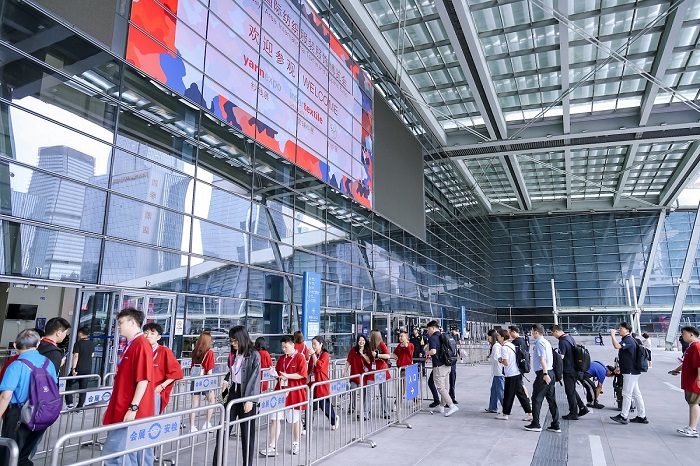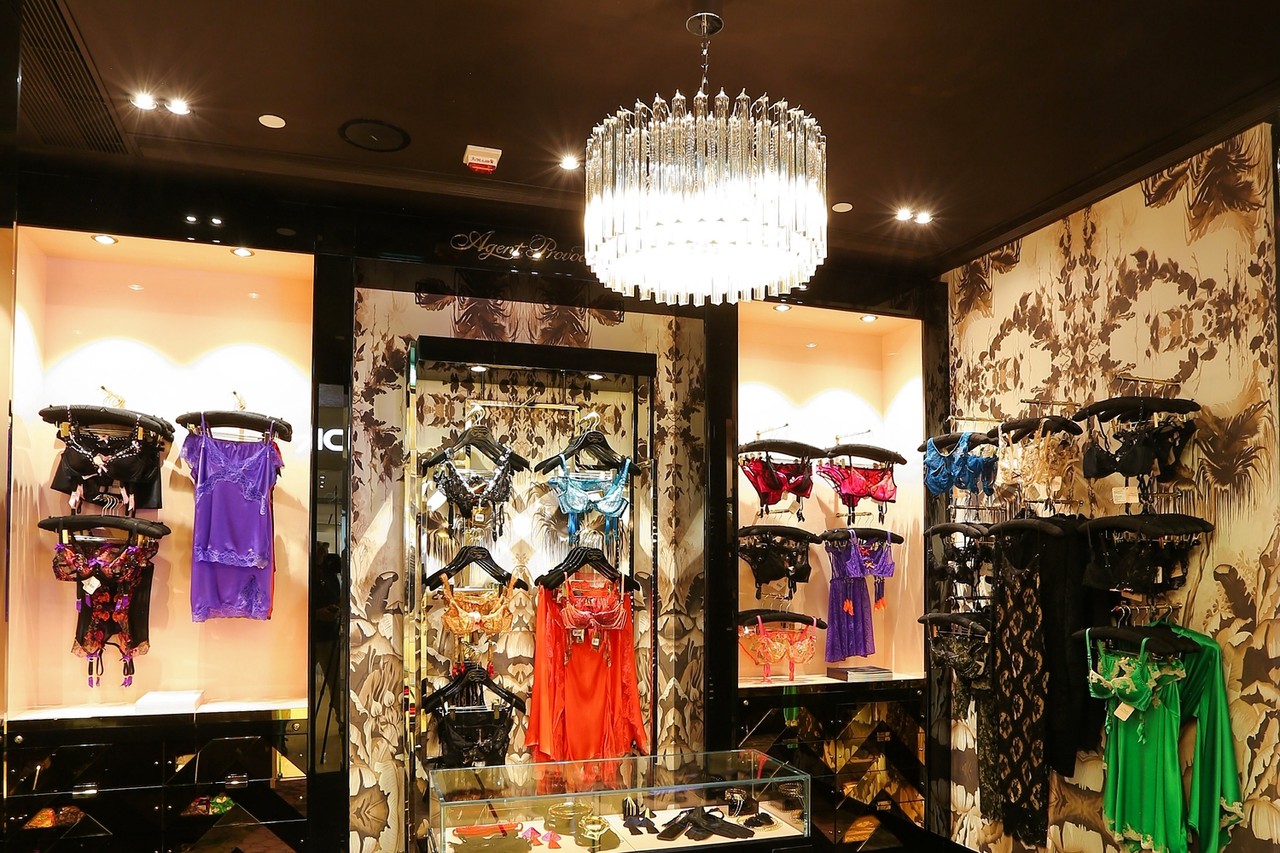FW
Apparel factories in Bangladesh with a good track record of workers' welfare are receiving increased orders from global retailers and buyers. On the other hand, export orders have been decreasing with non-compliant factories. Workers' safety system, firefighting equipment, evacuation mechanism, proper installation of machines and healthy work environment are among the compliance issues.
International brands and buyers consider the fire and structural safety of garment factories before placing import orders. Big factories compliant with labor standards have seen a sharp increase in work orders in recent months. A big number of international buyers are now turning to bigger and better compliant factories, resulting in increased orders. Medium and small factories which do not fulfill safety standards are going to face a shortage of orders.
Of the 5,500 factories listed by the Bangladesh Garment Manufacturers and Exporters Association, 3,500 are running and about 2,000 to 2,200 units have taken utilisation declaration from the association. Knitwear and woven garments exports of Bangladesh posted 16 per cent and 13 per cent growth respectively in the first nine months of the current fiscal year. The readymade garment sector contributed $21.51 billion to the country's export basket in the last 2012-13 fiscal year, and is eyeing $24.14 billion in the current fiscal year.
www.bgmea.com.bd/
The Bombay High Court has dismissed Birla’s plea over a stake in Century Mills property in Worli. The order comes as a relief to industrialist Nusli Wadia, who had opposed Century’s originating summons against him.
Justice R D Dhanuka said that this court has no jurisdiction to decide the originating summons taken out by Century Textiles & Industries in view of Section 41 of the Presidency Small Causes Act and in view of the filing of a suit by Wadia in the small causes court. The fate of the property battle between the Birlas and the Wadias over the prime piece of land occupied by Century Mill will now be decided by the small causes court, posted a hearing in May.
The HC had to decide if it had the jurisdiction to hear and decide issues raised by a Birla group company Century Textiles against Wadia, whose great-grandfather leased his land to the company to run only a mill. Century Textiles and Industries, founded in 1897 and now led by Kumar Mangalam Birla, in 2009 moved the Bombay HC seeking interpretation of certain clauses of a 999-year lease deed issued in the late 1800s by industrialist Nusli Wadia’s father in its favour. Wadia in 2009 terminated the lease deed and sought eviction of the Birlas from the leasehold land, which is almost 50,000 sq. yard. But Birla's plea in the HC, through senior counsel Iqbal Chagla, is that they are entitled to retain the land even after the closure of the mill in 2008.
Represented by senior counsel Rafique Dada and solicitor Shrikant Doijode, Wadia raised a preliminary issue of jurisdiction of Birla's plea to even be entertained by the HC. They denied Birla's contention that it was entitled to a relief and said it was the small causes court which could hear and decide landlord-tenant issues, even when it involved a former tenant, as in this case due to termination of lease deed due to violations of lease conditions. The lease said the land could be used to build a mill and mill-related structures only, and not other structures that the company has put up. In December 2010, the small causes court stayed any new construction on the leasehold land. A majority part of the Century Mill is owned as freehold land by the Birlas through the Century Textiles Company.
The Knitwear Technology Mission (KTM) in Tirupur will be operational from May 6. Set up by the Apparel Export Promotion Council at a cost of Rs 13 crores, it is aimed at promoting product and fabric diversification and value addition across the apparel value chain. It would offer the necessary services to trade and industry to develop innovative apparel categories for sportswear, swimwear and varieties of performance wear mainly from manmade fibers like polyester and nylon.
KTM has imported the latest version of the tricot warp knitting machine from Germany, which can be utilised by the Indian apparel exporting community for its sampling needs. The center would also impart consultancy and training in the fields of knitting, processing, garmenting, CAD/fashion designing, new product development, testing and consultancy for yarn and fabrics. It has a facility to train at least 5,000 people every year.
Meanwhile knitwear exporters from Tirupur are optimistic about business ahead. With exports soaring Rs 17,817 crores in the just ended fiscal after stagnating at around Rs 13,000 crores for almost three years in a row, garment exporters are positive about country’s business prospects. India will emerge as the number one country in export of garments in the near future if the new government that comes to power at the Centre succeeds in finalizing the free trade agreement (FTA) with the EU, which has so far been delayed by administration and technical hurdles.
Talking to the media, the past chairman of the Apparel Export Promotion Council and President of Tirupur Exporters’ Association, A Sakthivel said that India’s exports achieved 30 per cent growth in rupee terms compared with last year. He said that the improvement in export figures is due to manufacturing cost in China and non-compliance of factory norms in Bangladesh.
He said that over 95 per cent of the factories in Tirupur adhere to the importers compliant norms stringently and the fall in rupee value and increased purchasing power in the EU market have also helped in improving export turnover from the Tirupur region. Economic recovery in the US market as well as penetration into newer territories such as Japan, Australia and South America has also boosted India’s garment exports.
More than 1,100 participants gathered at the Copenhagen Opera House for the Copenhagen Fashion Summit organised by the Danish Fashion Institute on April 24. The event witnessed 23 experts focusing on topics like consumer behaviour, recycling and CO2 emissions in the wake of need for guiding the industry towards a more sustainable future.
Talking about how the entire textile and apparel world is moving towards sustainability, Justin Keeble, Managing Director of Accenture's Sustainability Services across Europe, Africa and Latin America, said that the global market for sustainable fashion has risen 40 per cent since 2000. Noting that more than 90 per cent of all garments are disposed off within six months, he said that there is a need to create a circular economy for the fashion industry.
Bangladesh's Rana Plaza disaster that claimed several lives owing to non-compliant factory conditions, was also a major topic of discussion as speakers pointed out that consumers are seeking assurance that fashion production is ecologically and socially sustainable. For instance, Helena Helmersson, Head of Sustainability at Sweden's Hennes & Mauritz (H&M), said that as per her company's latest market research in just one year, from 2012 to 2013, a 21 per cent increase has been noticed among consumers showing interest in sustainability. Apart from implementing several sustainable initiatives in 2013, H&M also worked with the International Association for Textile Care Labelling (Ginetex) to launch the Clevercare project at the summit. The system provides information to consumers on how to look after their clothes to make them last longer, using less toxic methods to keep them clean. H&M has already implemented the Clevercare system.
Marco Bizzarri, President and CEO at Italian luxury brand Bottega Veneta said that even prospective employees appearing for the interview are interested in knowing about company’s sustainability initiatives. All of Bottega Veneta's raw materials come from Europe, which makes it easier to check their production. At the end of the year, the brand will release a collection of handbags, where the leather has been certified through the entire chain, from breeding, manufacturing and shipping to outlets. It has also built its new headquarters in northern Italy using sustainable design methods.
Leading computerized flat knitting machine manufacturer Shima Seiki will participate in the Techtextil North America exhibition in Atlanta, US, next month. On display will be the company’s latest technological contributions to the field of technical textiles including a new machine for inlay fabrics for technical applications.
SRY123LP is Shima Seiki’s latest computerized knitting machine that features loop presser beds mounted atop conventional needle beds that provide improved control over press down of individual loops. This presents unprecedented capability especially with partial knitting patterns and inlay patterns.
Inlay fabric is produced by inserting yarn into existing knit fabric in a weave fashion, opening opportunities for expansion into markets for wovens. Inlay also suppresses typical stretch characteristics of knitted fabrics, and since new materials such as metallic and monofilament yarns can be used for inlay structures, new applications in industrial textiles are realized.
Known for its pioneering whole garment knitting technology, wherein a knitted item is produced in its entirety without seams, Shima Seiki will also introduce its new SWG061N2 compact whole garment knitting machines that feature the company’s original SlideNeedle.
Shima Seiki makes computerized flatbed knitting machines, whole garment knitting machines, computerized flat knitting machines, glove and sock knitting machines, computer graphic design systems, computerized CAM machines, textile printing machines and related peripherals.
www.shimaseiki.com/
Around 20,000 Cambodian garment workers have joined a strike to demand a $50 dollar for shunning walkouts over the last three months. Workers at around 30 factories in two special economic zones near the Vietnamese border want the bonus after a union said that two factories had rewarded employees for not participating in the strikes, which routinely cripple the industry.
However the Garment Manufacturers Association of Cambodia (GMAC) has denied factories had promised to pay workers for not striking and warned their action could snowball. GMAC has called on authorities to prevent illegal activities that could lead to violence, accusing some of the striking workers of hurling stones at factories.
Garment workers have been at the forefront of labor protests for higher wages and have faced several crackdowns by Cambodian authorities. About 6,50,000 workers provide the backbone of Cambodia’s multi-billion dollar garment industry. The kingdom’s lucrative garment sector has been rattled by a series of labor disputes.
Trade unions and workers plan to mark May 1 (International Labor Day) by marching in the capital Phnom Penh to demand higher wages, better working conditions and the release of activists and workers arrested in the violent January protests.
www.gmac-cambodia.org/
Denim by Premiere Vision will hold its debut edition in Spanish city of Barcelona on May 21–22. Nearly 100 exhibitors from 20 countries are expected to participate, an increase of 5 per cent compared to May 2013 edition. The exhibitors include mill owners, manufacturers and finishers. Of these, 22 per cent are accessories manufacturers and the rest consisting of machinery manufacturers, spinners, textile manufacturers and new technologies.
In terms of nationalities, Turkish businesses account for 31 per cent of the exhibitor list, Italians 20 per cent, Morocco 9 per cent and Tunisia 3 per cent with a few exhibitor companies coming from Japan, Indian, Pakistan, Hong Kong and Brazil.
At its May 2013 edition, Denim by Première Vision saw over 3,000 visitors, with 72 per cent coming from abroad. Moving from Paris to Barcelona’s 19,000 sq. mtr. hall of the Fira Barcelona Montjuic, the organizers have kept the fair's theme as ‘play the game’, which will culminate in an evening event complete with gaming tables.
www.denimbypremierevision.com
India Show organized by Confederation of Indian Industry (CII), concurrently with the Hong Kong Spring Fair showcased the country's strengths in textiles, clothing, handicrafts and household goods. The show was held in association with the Ministry of Commerce and Industry and the Consulate General of India in Hong Kong from April 27-30, 2014.
The exhibition had on display a wide range of products from home products, to garments and fashion accessories. Many of the world’s largest suppliers participated showcasing their range of products. Indian participation at Hong Kong Fair is largest ever comprising of over 200 players from the industry.
An India evening held during the fair showcased fabric collection of India and various fashion designers displayed their exquisite work. Hong Kong Spring Fair 2014 is Asia's largest spring fair organized by the Global Sources and held at the Asia World Expo. The fair attracted over 2,700 booths and offered a unique platform to suppliers to reach out to buyers from over 114 countries.
 With Bangladesh in the news for all the wrong reasons, many fashion brands and retailers are exploring alternate sourcing destinations. And Turkey is emerging as a good option for them. Over the last decade, the country has emerged as the fourth largest supplier of clothing in the world and a leading sourcing destination for Europe.
With Bangladesh in the news for all the wrong reasons, many fashion brands and retailers are exploring alternate sourcing destinations. And Turkey is emerging as a good option for them. Over the last decade, the country has emerged as the fourth largest supplier of clothing in the world and a leading sourcing destination for Europe.
The textiles and garments industry is one of the most important driver of Turkey’s economic success and contributes about 8 per cent to the country’s GDP and $30 billion in production value. After attracting global attention as the next sourcing hub, Turkish Clothing Manufacturers Association has set out an ambitious target of reaching an export figure of $100 billion by 2023. However, studies point out that to reach the target, Turkey needs to perk up and invest in technology, sustainable supply chain and workforce.
Measures to achieve the target
To achieve its long-term goal, Turkey has started developing its own international  brands and clothing chains, such as LC Waikiki, which has over 400 stores. However, after the Rana Plaza disaster in Bangladesh a year ago, experts say that to further leverage its geographic position between the European Union and the Middle East and its strong industrial base, Turkey must invest in R&D for product innovation, sustainable supply chains to attain its high growth plan.
brands and clothing chains, such as LC Waikiki, which has over 400 stores. However, after the Rana Plaza disaster in Bangladesh a year ago, experts say that to further leverage its geographic position between the European Union and the Middle East and its strong industrial base, Turkey must invest in R&D for product innovation, sustainable supply chains to attain its high growth plan.
Rana Plaza collapse drew world’s attention to the poor working conditions in emerging export destinations. Several research groups and labour organisations have now undertaken a survey responsibility to figure out and improve factory conditions in such regions. Leading players are now contemplating over how they can make supply chains compliant and transparent while remaining efficient.
Impact Economy report on compliance
Impact Economy too carried out a survey to find out whether it is possible to take the Turkish industry to a much higher level of social and environmental performance, while keeping it competitive. Over eight months, the company spoke to over 730 stakeholders and screened more than 200 reports apart from conducting expert interviews, studying several sourcing countries and consumer markets. The resulting report ‘Creating Sustainable Apparel Value Chains’ argued that greater total resource productivity and transparency, upgrading industry infrastructure by (impact) investing, improving working conditions with a new level of ambition, and replicating best practices of leading players can together unlock the next level of viability and sustainability.
The report suggests tackling working conditions in emerging market sourcing locations as the first priority. The key, it says is redefining labour as an asset, rather than just a cost. Next is lean manufacturing or achieving greater total resource productivity and transparency across the supply chain via front-of-pipe process design, and energy efficient infrastructure. Third is building sustainable supply chain and fourth measure suggested by the survey says that sustainable sourcing will become a necessity to compete, as it already has in other industries.
www.impacteconomy.com
Kenya's textile sector is finding it tough to attract investors. Among the problems are the high cost of power and labor, political insecurity and huge gaps within intermediate sectors of the cotton value chain. Ginners and spinners make use of obsolete technology and equipment. As a corrective measure, the African Cotton and Textile Industries Federation will organize a farm-to-fashion value chain campaign called Origin Africa from November 10 to 12, 2014. The two-day expo will try to advance the image of Africa as a place to do business in.
The event aims to make the continent more visible as a source of supply of cotton, textile products and fabrics for international buyers. This edition aims to make Kenya, where cotton is mainly grown by small scale farmers into a number one sourcing destination for textile and apparels. Players in the industry now want farmers in the continent to take on to value addition so as to increase farmers’ earnings, and also provide jobs for the 11 million unemployed youth in the country.
Origin Africa is dedicated to improving the African cotton, textile and apparel trade. It involves collaboration with producers across the cotton value chain from farm to fashion including accessories suppliers, home textile and décor to develop, guide and promote African trade.
www.originafrica.org/












